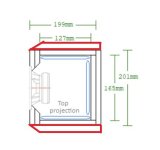For whatever it's worth:
As a brief aside -I get the feeling (I'm not saying that's the case here -it's just a convenient place to mention it) that people sometimes think the backwave of the driver 'flows through' the box & out of the vent. Except arguably in Helmholtz based boxes where the driver is unbaffled, i.e. the vent area Av is > Sd, that doesn't actually happen. In the case of Lhotse, as an MLTL, the driver excites a mildly mass-loaded & damped air-column & it's that that you hear in terms of designed enclosure output, not the backwave of the driver itself. Secondary effects (usually unwanted) come in the form of reflections etc., which are at high frequencies / short wavelengths & suppressed by the internal damping, which is generally designed & optimised to absorb these along with harmonics. Sometimes larger amounts may be used to influence Fb, but that's moving more toward TL territory, or boxes that would otherwise be acoustically undersized for the intended alignment.
Beyond that, there are structural resonances that need to be considered. Assuming you're taking the hi-fi approach & viewing a transducer as a reproduction device, ideally, you don't want any at all. The issue with that is there's no such thing as a material that doesn't resonate. Even lead and concrete do (concrete can be surprisingly so in some cases). It's just a question of where, over what bandwidth & amplitude. Essentially what we're doing is manipulating where the panel / structural Fs and, say, up to F5 on the harmonics occur. This is where misunderstandings can occur. The box operating BW is where the most energy exists to excite panel resonances, so logically, you don't want it there (although it's not always thought about). The most 'obvious' approach to dealing with panel / structural resonance is to simply add mass & try to lower the Fs as far as possible & preferably < the box operating region. The issue there is that it takes a heck of a lot of mass to do that for most bass enclosures (not a bad approach for midrange boxes though) and if you do that without also increasing rigidity, you drop Q in the process, broadening out the range the panel resonates. It's a bit of a sledgehammer / inefficient solution & isn't always as effective as it might be. The other approach is to kick panel rigidity up, and move panel / structural Fs (and Q) upward, above the box operating band, where significantly less energy is available to excite it. It may ring like a bell if you belt it with your knuckes, a hammer or whatever -but that isn't representative of actual operating conditions & isn't likely to behave that way in practice. If you pick your material, it may also result in a lighter box. You can combine the two -high mass & high rigidity is good, obviously, and to an extent, that's what I did with Lhotse, though it still benefits a little from some on the longitudinal, especially if MDF is used -at the end of the day, you can't have panels that are too rigid (or not for this type of enclosure anyway).
A third approach is the one the BBC took back in the '70s: a rigid sub-frame / battons to which light, not particularly rigid panels were fixed, which were then damped with a bitumen layer, over which is a thick layer of (in their case foam) damping. Done properly (properly 😉 ), that can keep panel resonance out of, say, the ~300Hz - 1KHz portion of the midband, but it can come at the risk of some delayed energy in the upper bass - bottom end of the midband, particularly with larger cabinets.
As a brief aside -I get the feeling (I'm not saying that's the case here -it's just a convenient place to mention it) that people sometimes think the backwave of the driver 'flows through' the box & out of the vent. Except arguably in Helmholtz based boxes where the driver is unbaffled, i.e. the vent area Av is > Sd, that doesn't actually happen. In the case of Lhotse, as an MLTL, the driver excites a mildly mass-loaded & damped air-column & it's that that you hear in terms of designed enclosure output, not the backwave of the driver itself. Secondary effects (usually unwanted) come in the form of reflections etc., which are at high frequencies / short wavelengths & suppressed by the internal damping, which is generally designed & optimised to absorb these along with harmonics. Sometimes larger amounts may be used to influence Fb, but that's moving more toward TL territory, or boxes that would otherwise be acoustically undersized for the intended alignment.
Beyond that, there are structural resonances that need to be considered. Assuming you're taking the hi-fi approach & viewing a transducer as a reproduction device, ideally, you don't want any at all. The issue with that is there's no such thing as a material that doesn't resonate. Even lead and concrete do (concrete can be surprisingly so in some cases). It's just a question of where, over what bandwidth & amplitude. Essentially what we're doing is manipulating where the panel / structural Fs and, say, up to F5 on the harmonics occur. This is where misunderstandings can occur. The box operating BW is where the most energy exists to excite panel resonances, so logically, you don't want it there (although it's not always thought about). The most 'obvious' approach to dealing with panel / structural resonance is to simply add mass & try to lower the Fs as far as possible & preferably < the box operating region. The issue there is that it takes a heck of a lot of mass to do that for most bass enclosures (not a bad approach for midrange boxes though) and if you do that without also increasing rigidity, you drop Q in the process, broadening out the range the panel resonates. It's a bit of a sledgehammer / inefficient solution & isn't always as effective as it might be. The other approach is to kick panel rigidity up, and move panel / structural Fs (and Q) upward, above the box operating band, where significantly less energy is available to excite it. It may ring like a bell if you belt it with your knuckes, a hammer or whatever -but that isn't representative of actual operating conditions & isn't likely to behave that way in practice. If you pick your material, it may also result in a lighter box. You can combine the two -high mass & high rigidity is good, obviously, and to an extent, that's what I did with Lhotse, though it still benefits a little from some on the longitudinal, especially if MDF is used -at the end of the day, you can't have panels that are too rigid (or not for this type of enclosure anyway).
A third approach is the one the BBC took back in the '70s: a rigid sub-frame / battons to which light, not particularly rigid panels were fixed, which were then damped with a bitumen layer, over which is a thick layer of (in their case foam) damping. Done properly (properly 😉 ), that can keep panel resonance out of, say, the ~300Hz - 1KHz portion of the midband, but it can come at the risk of some delayed energy in the upper bass - bottom end of the midband, particularly with larger cabinets.
I have damped with bitumen tiles before.
Mostly in CD players.
But have tried in speakers too. They are sold with stickers on the back. Sold as damping in cars.
Can't remember how good it was but it didn't hurt.
Mostly in CD players.
But have tried in speakers too. They are sold with stickers on the back. Sold as damping in cars.
Can't remember how good it was but it didn't hurt.
Hi Scottmoose, no bracing will be added in the Lhotse cabinets here.
Cabinets will be fabricated with heavy materials as mentioned before.
As I said:
Bracing in such a small internal section (165x127mm) will bring nothing more than overkill with the materials I use.
You only will disturbing the working conditions for the MAOP in the design such as standing wave.
My advice not to do it.
Keep these beauties as clean as possible, also inside cabinet.
Cabinets will be fabricated with heavy materials as mentioned before.
As I said:
Bracing in such a small internal section (165x127mm) will bring nothing more than overkill with the materials I use.
You only will disturbing the working conditions for the MAOP in the design such as standing wave.
My advice not to do it.
Keep these beauties as clean as possible, also inside cabinet.
Okay, I'll say this once, politely since I've no wish to be rude:
People are (obviously) free to build my designs as they wish, and I hope they enjoy every minute of that, and using them afterwards. But please don't claim you know more about them than I do. I'm not trying to be insulting with that, just stating that there is only one person who made the design calculations for alignment and structure, and tested them with various materials & with / without bracing. I had to do quite a bit of this, since Lhotse is part of the wider Himalaya / Mountain series. And the simple fact is that an assumption of modest longitudinal bracing was included & incorporated into the design from the outset, and checked in pipe prototyping. It does not affect the longitudinal standing wave, nor causes issues with reflections for that reason. Although as stated it is not necessary for good results, as the structure itself is deliberately quite solid, it does not cause problems (I wouldn't recommend it in the build notes if it did), and brings some small performance advantages, especially when coupling the driver. That is the design and test based reality. If you prefer to omit it, that's fine & you'll get good results, especially with those solid side baffles you're planning, but please don't state that the (optional) longitudinal bracing is detrimental to performance, since that is simply incorrect. Okay? No offense intended, or implied: I thoroughly enjoy reading your build threads & I'm looking forward to this one if you go ahead. I'm just making a small, purely factual correction.
People are (obviously) free to build my designs as they wish, and I hope they enjoy every minute of that, and using them afterwards. But please don't claim you know more about them than I do. I'm not trying to be insulting with that, just stating that there is only one person who made the design calculations for alignment and structure, and tested them with various materials & with / without bracing. I had to do quite a bit of this, since Lhotse is part of the wider Himalaya / Mountain series. And the simple fact is that an assumption of modest longitudinal bracing was included & incorporated into the design from the outset, and checked in pipe prototyping. It does not affect the longitudinal standing wave, nor causes issues with reflections for that reason. Although as stated it is not necessary for good results, as the structure itself is deliberately quite solid, it does not cause problems (I wouldn't recommend it in the build notes if it did), and brings some small performance advantages, especially when coupling the driver. That is the design and test based reality. If you prefer to omit it, that's fine & you'll get good results, especially with those solid side baffles you're planning, but please don't state that the (optional) longitudinal bracing is detrimental to performance, since that is simply incorrect. Okay? No offense intended, or implied: I thoroughly enjoy reading your build threads & I'm looking forward to this one if you go ahead. I'm just making a small, purely factual correction.
Last edited:
Hi Scottmoose,
Another advice to your design; double also the side panels and add on each front side panel a facet of (for example) 18 x 40 mm to keep the original designed baffle wideness of 201 mm.
Do what you want with it.
Another advice to your design; double also the side panels and add on each front side panel a facet of (for example) 18 x 40 mm to keep the original designed baffle wideness of 201 mm.
Do what you want with it.
Attachments
@Scottmoose
here's a less contentious question...
how do you pronounce this name?
lot-see? lots? loats??
here's a less contentious question...
how do you pronounce this name?
lot-see? lots? loats??
The party can begin 😀 🥳🥳 🙂.
All double MDF panels are glued and screwed together.
First screw the two panels together with at least 2 screws without using glue.
This for easy aligning the two panels with glue on it.
Remove surplus glue with a wet cloth.
All double MDF panels are glued and screwed together.
First screw the two panels together with at least 2 screws without using glue.
This for easy aligning the two panels with glue on it.
Remove surplus glue with a wet cloth.
Attachments
-
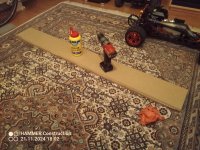 IMG_20241121_180209_105.jpg550.3 KB · Views: 106
IMG_20241121_180209_105.jpg550.3 KB · Views: 106 -
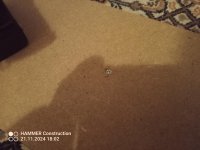 IMG_20241121_180204_278.jpg317 KB · Views: 102
IMG_20241121_180204_278.jpg317 KB · Views: 102 -
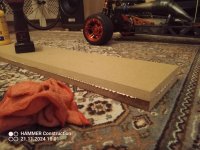 IMG_20241121_180148_636.jpg372.5 KB · Views: 100
IMG_20241121_180148_636.jpg372.5 KB · Views: 100 -
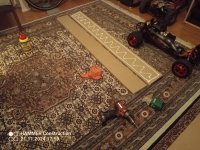 IMG_20241121_175918_118.jpg577.6 KB · Views: 101
IMG_20241121_175918_118.jpg577.6 KB · Views: 101 -
 IMG_20241121_172744_765.jpg476.9 KB · Views: 111
IMG_20241121_172744_765.jpg476.9 KB · Views: 111 -
 IMG_20241121_110014_110.jpg389.9 KB · Views: 108
IMG_20241121_110014_110.jpg389.9 KB · Views: 108 -
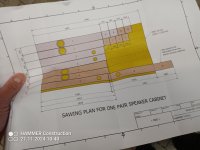 IMG_20241121_104017_015.jpg234.3 KB · Views: 106
IMG_20241121_104017_015.jpg234.3 KB · Views: 106 -
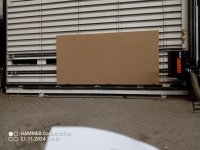 IMG_20241121_104010_556.jpg325.2 KB · Views: 111
IMG_20241121_104010_556.jpg325.2 KB · Views: 111 -
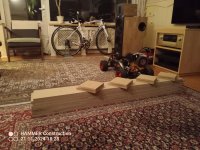 IMG_20241121_182807_538.jpg481.2 KB · Views: 104
IMG_20241121_182807_538.jpg481.2 KB · Views: 104
but it can come at the risk of some delayed energy in the upper bass - bottom end of the midband, particularly with larger cabinets.
The big Harbeth for instance.
dave
Not required, but you're absolutely free to do it; the chamfer will be cosmetic only with minimal impact on step & diffraction; structurally the doubled side baffles will increase the structural rigidity further, which is never a bad thing, but with the single-skinned panels keyed into & agaist the existing doubled front, rear and tops the panel modes are already below the audibility threshold. As noted, this was designed and tested -I'm not guessing here. 😉Hi Scottmoose,
Another advice to your design; double also the side panels and add on each front side panel a facet of (for example) 18 x 40 mm to keep the original designed baffle wideness of 201 mm.
Do what you want with it.
Lhotse? Phonetically, it's usually pronounced 'Loat-se'.@Scottmoose
here's a less contentious question...
how do you pronounce this name?
lot-see? lots? loats??
Not required, but you're absolutely free to do it; the chamfer will be cosmetic only with minimal impact on step & diffraction; structurally the doubled side baffles will increase the structural rigidity further, which is never a bad thing, but with the single-skinned panels keyed into & agaist the existing doubled front, rear and tops the panel modes are already below the audibility threshold. As noted, this was designed and tested -I'm not guessing here. 😉
Your design is very tall and skinny for this driver.
It needs more mass to control it.
More mass the better.
Also a heavy feet is required and properly fixed to the cabinet.
Right, I think I've been quite polite, but you don't seem to have taken the hint yet. So I'll ask directly: will you please stop making baseless statements? I always welcome constructive criticism, questions or suggestions, but I do take issue when people casually announce that one of my designs 'needs' xyz when they haven't even built it yet, nor have they apparently made any detailed analysis of its characteristics.
So here are some facts (and one general point):
1/ You did not, and have not done, the design calculations for this loudspeaker alignment. I'm not trying to be rude here, just offering a reminder. 😉
2/ In the same vein, you did not, and apparently haven't done, the design stress and resonant calculations for the panels & structure with various materials and various thicknesses, with and without bracing, or tested them. I actually have.
3/ Mass is not a virtue in itself, as I covered above, and statements like 'it needs more mass to control it' are meaningless until you're clear about exactly what you are talking about. Where, why, and what is being 'controlled', how did you calculate it and what testing did you do on it, and potential alterative solutions? It can be useful in conjunction with other features, but it's the combination & context that are the critical parts of that.
4/ You can use whatever feet you like; given the mass of the enclosure & its height, they will need to be sturdy types if used -that is perfectly true and I completely agree. I don't specify a particular product though, because people will select what suits their particular requirements. Not everybody can use the same type of feet due to different circumstances, e.g. floor coverings etc., and may also be limited by local availability. For the same reason, I don't specify particular types of binding posts or internal wiring, and give a handful of suggestions for damping material with approximately equivalent performance -these again are partly matters of personal preference & partly local availability.
The first build stages are looking good so far by the way -I'm looking forward to seeing the rest. 🙂
So here are some facts (and one general point):
1/ You did not, and have not done, the design calculations for this loudspeaker alignment. I'm not trying to be rude here, just offering a reminder. 😉
2/ In the same vein, you did not, and apparently haven't done, the design stress and resonant calculations for the panels & structure with various materials and various thicknesses, with and without bracing, or tested them. I actually have.
3/ Mass is not a virtue in itself, as I covered above, and statements like 'it needs more mass to control it' are meaningless until you're clear about exactly what you are talking about. Where, why, and what is being 'controlled', how did you calculate it and what testing did you do on it, and potential alterative solutions? It can be useful in conjunction with other features, but it's the combination & context that are the critical parts of that.
4/ You can use whatever feet you like; given the mass of the enclosure & its height, they will need to be sturdy types if used -that is perfectly true and I completely agree. I don't specify a particular product though, because people will select what suits their particular requirements. Not everybody can use the same type of feet due to different circumstances, e.g. floor coverings etc., and may also be limited by local availability. For the same reason, I don't specify particular types of binding posts or internal wiring, and give a handful of suggestions for damping material with approximately equivalent performance -these again are partly matters of personal preference & partly local availability.
The first build stages are looking good so far by the way -I'm looking forward to seeing the rest. 🙂
Last edited:
Ah! Sorry Scottmoose, I didn't know you can't handle criticism.
I built a lot of speakers and I know what I'm doing and talking about.
Nevermind ;-).
I built a lot of speakers and I know what I'm doing and talking about.
Nevermind ;-).
Humility is a virtue. Just sayin'. 😉I built a lot of speakers and I know what I'm doing and talking about.
jeff
Once you put a ship into motion, how do you make it stop? My CHP-90 build used 10mm ply and weighs around 3kg per side (I'd have to check to be exact). The convenience is a plus, and makes felt pads a realistic option for feet to prevent rattles on a desktop. Or an artsy option with suspending the boxes on fishing line or E-strings.The big Harbeth for instance.
dave
That said, the local hardware stores have all kinds of marble slabs. So I'm tempted to try that for a front baffle, if I can figure out how to cut the speaker hole.
=Ah! Sorry Scottmoose, I didn't know you can't handle criticism.
I always welcome constructive criticism, questions or suggestions, but I do take issue when people casually announce that one of my designs 'needs' xyz when they haven't even built it yet, nor have they apparently made any detailed analysis of its characteristics.
If that sounds like somebody resistant to reasonable changes, then we're all in trouble. 😉 I've also already noted that several changes you've made or are intending to make (the thicker side baffles & chamfered front vertical edges) are quite practical & will do no harm, assuming the oak is well-seasoned & has a tightly spaced parallel grain for obvious reasons. Come on -you're entitled to your opinion on other matters, and nobody is arguing with that. All I'm asking is that you don't present your opinion as fact in the face of the actual facts I've already given.
The low mass can definitely be convenient -especially since there's a bit of a size difference; the Harbeth we're talking about is the M40 series, which is a roughly 100 litre / 3.5ft^3 3-way standmount with a 12in woofer, 8in midrange & 1in dome tweeter.Once you put a ship into motion, how do you make it stop? My CHP-90 build used 10mm ply and weighs around 3kg per side (I'd have to check to be exact). The convenience is a plus, and makes felt pads a realistic option for feet to prevent rattles on a desktop. Or an artsy option with suspending the boxes on fishing line or E-strings.
Water-jet CNC is preferred for curved 'internal' cuts IIRC, although I imagine there are other ways.That said, the local hardware stores have all kinds of marble slabs. So I'm tempted to try that for a front baffle, if I can figure out how to cut the speaker hole.
Or just use a soft curing adhesive to mass load the enclosure’s top & or side panels? Kitchen countertop shops likely have oodles of sink cutouts they pay to have carted away, and you can rent a wet tile saw from many larger building supply stores.
- Home
- Loudspeakers
- Full Range
- MarkAudio MAOP 11 single driver loudspeaker
